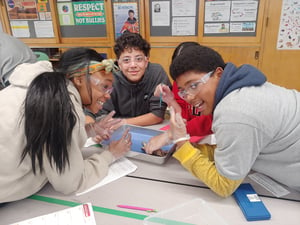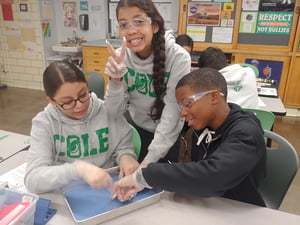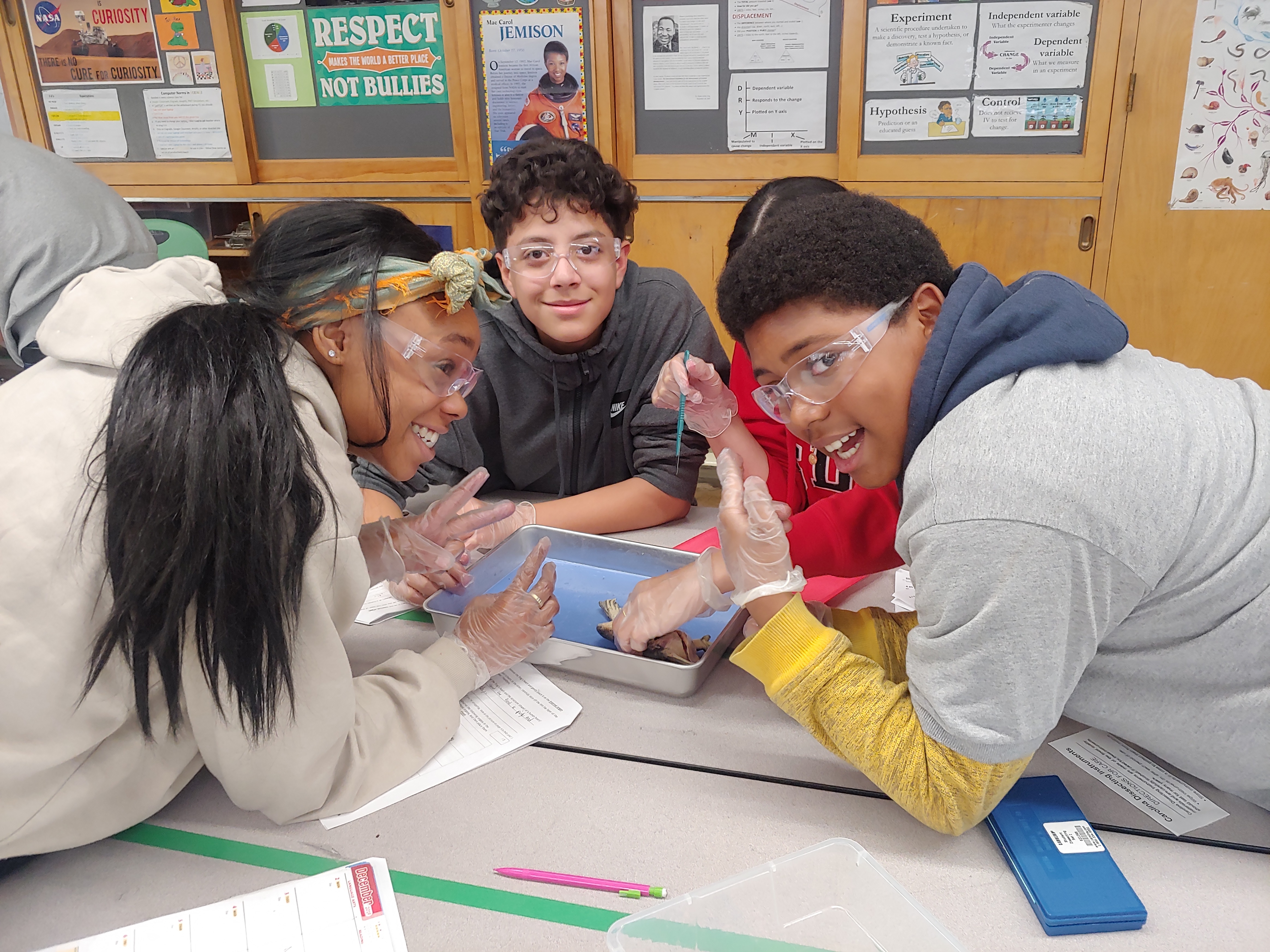A Look Inside a Middle School Science Classroom
Are you missing the days of middle school science? Take a peek into one of our 21st century science classrooms and see what has changed, and what has stayed the same.
Middle school science classes are “the perfect time and age to work with students to develop their inquisitive mind and pursue fascinating topics that hook them into learning in a new way,” says DSST: Cole Middle School science teacher, Emily Burkhardt.
Many students have limited science exposure in elementary school, so Burkhardt often is exposing students to this new way of thinking for the first time - “I love being able to do lots of demos and experiments and bring the concepts to the classroom – getting students to ‘believe’ in the laws of physics, for example, in the age of Google and conspiracy theories is hard work and also extremely satisfying to see that light bulb of awe go off.”
Burkhardt is in her 5th year of teaching at Cole MS. She “work[s] at Cole because the students here work extremely hard to grow and we work hard as a team to build the skills-based learning up in each classroom.”
 To kick off Trimester 2, Burkhardt’s 7th grade science class did a frog dissection. Students had “just finished learning about the human body and how we metabolize energy, but it is something else entirely to SEE the body itself, since frogs and humans are very similar.” This means that often connections are made between subjects based off of current themes of each class, reinforcing habits and skills across disciplines.
To kick off Trimester 2, Burkhardt’s 7th grade science class did a frog dissection. Students had “just finished learning about the human body and how we metabolize energy, but it is something else entirely to SEE the body itself, since frogs and humans are very similar.” This means that often connections are made between subjects based off of current themes of each class, reinforcing habits and skills across disciplines.
Students made real-world connections throughout the dissection activity, and are only getting more fired up about the months ahead.
 “The next unit will continue a discussion about what happens to our bodies when we go live in space, and we talk about the experiments done with animals on the ISS (International Space Station) to determine what we can learn about the effects of microgravity. I love teaching this unit because it truly is once-in-a-lifetime. Students who struggle to engage with reading and writing get to see the organs up close, and even teachers have come in to learn because they didn’t get the opportunity when they were in school. At least one student every year decides they will become a surgeon (and usually one is so grossed out they realize they might not want to be one!) and this activity sticks with them throughout their lives.”
“The next unit will continue a discussion about what happens to our bodies when we go live in space, and we talk about the experiments done with animals on the ISS (International Space Station) to determine what we can learn about the effects of microgravity. I love teaching this unit because it truly is once-in-a-lifetime. Students who struggle to engage with reading and writing get to see the organs up close, and even teachers have come in to learn because they didn’t get the opportunity when they were in school. At least one student every year decides they will become a surgeon (and usually one is so grossed out they realize they might not want to be one!) and this activity sticks with them throughout their lives.”
Burkhardt notes that really the true “shock and awe” at seeing intestines, the heart, and watching students overcome the “gross factor” and work together is the best part of this unit.
We’re excited to see what these intrepid Cole MS students will uncover next!
